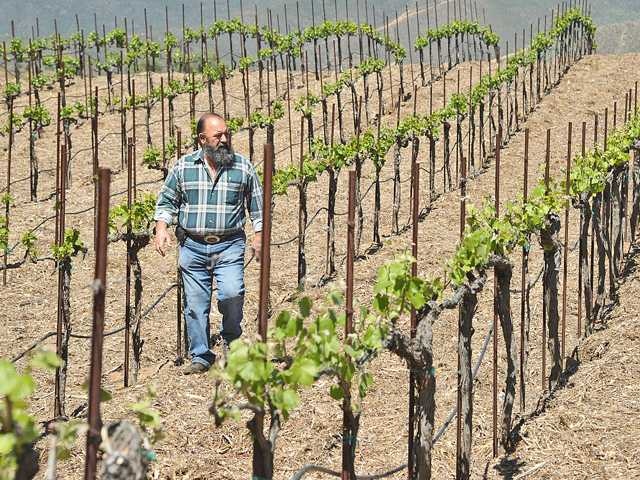Any lover of white wines would appreciate a tasting event geared specifically to their taste. Those get-togethers are few and far between, unfortunately.
Recently, Los Angeles wine educator
Ian Blackburn turned his
WineLA spotlight at the Peninsula Hotel on the fairer side of the wine world. Blanc de Blancs focused on whites, rosés and sparklers in a walk-around tasting which was beefed up by seminars on more specific topics. Attendees were asked to wear white, but the photo shows some Angelenos can't go out in anything other than black.
Here are some of the standouts, with their suggested retail price and a brief tasting note included:
Maison Les Alexandrins Crozes-Hermitage Blanc 2017 - $29 - Marsanne/Roussanne blend shows a savory note.
Famille Perrin Reserve Cotes du Rhone Blanc 2017 - $15 - Great minerals in this mix of Grenache Blanc, Marsanne, Roussanne and Viognier..
Tablas Creek Esprit Blanc Paso Robles 2016 - $48 - Savory, great salinity, aged in huge oak vats. Roussanne, Grenache Blanc, Picpoul Blanc.
Tablas Creek Cotes de Tablas Blanc Paso Robles 2017 - $34 - Viognier, Grenache Blanc, Marsanne, Roussanne. Fabulous.
Chateau de Beaucastel Cotes du Rhone Coudoulet Blanc 2014 - Marsanne, Viognier and Clairette grapes grown on a part of the estate that’s literally across the street from Chateauneuf-du-Pape.
Domaine de l’Olivier Muscadet, Sevre et Maine 2016 - $16 - Big minerals from the Melon de Bourgogne grapes. Ready for oysters.
Seigneurie de Posanges Chardonnay, Meursault Les Cras 1er Cru 2013 - $115 - Great touch of new oak. I'm told the winemakers of Meursault never received their barrels back after shipping, as other regions did. Therefore, they always used new oak. They had no previously-used barrels.
Weingut Friedrich Becker, Estate Pinot Blanc, Pfalz Germany 2017 - $21 - Estate borders Alsace, and they have the minerals to prove it.
Weingut Okonomierat Rebholz, Riesling, Ganz Horn, Pfalz Germany 2014 - $79 - Much petrol.
Bernardus Sauvignon Blanc Arroyo Seco 2017 - $30 - Musqué clone from the Griva Vineyard, grapes that were planted at the request of Bernardus. There's a splash of Semillon. Aromatics aplenty, slight grassiness.
Bernardus Chardonnay, Sierra Mar Vineyard, Santa Lucia Highlands, 2016 - $50 - Only 400 cases produced. Twelve months oak, doesn't show it.
Bernardus Saignée de Pinot Noir Rosé, Santa Lucia Highlands 2017 - $25 - The juice was bled from their six Pinots. Great fruit, gentle acidity, perfect for the porch.
Mail Road Wines Chardonnay, Mt. Carmel Vineyard, Sta. Rita Hills 2013-2015 - $100-$125 - Aged in a three-way combo of new and used oak and steel, and the wood hardly shows.
BOLD Wine Co. Albariño, Arroyo Seco 2018 - $25 - From Seabold Cellars. The minerals dominate. Their 2017 Dry Riesling from the same AVA shows a bit of petrol.
Law Estate Wines Soph 2015-2017 - $80 - Roussanne is one of my favorite grapes, and all three of these vintages are heavy with it, Marsanne and Clairette Blanche added, all from the Law Family Vineyard in Paso Robles. Great stuff here.
Long Meadow Ranch Pinot Gris, Anderson Valley 2017 -$35 - Dry and steely, and quite Burgundian.
Stony Hill Vineyard Chardonnay Spring Mountain District, Napa Valley 2016 - $54 - Lots of minerals, six months neutral French oak, on the lees with no stirring.
Domaines Schlumberger Pinot Gris 2017 - $19 - Salinity now! So nice to get something other than flowers from a grape that can show beautifully, which it does here. From Alsace.
Domaines Schlumberger Riesling Saering 2015 - $29 - Beautiful petrol note.
Famille Hugel Riesling Grosse Laüe 2011 - $76 - Petrol


































